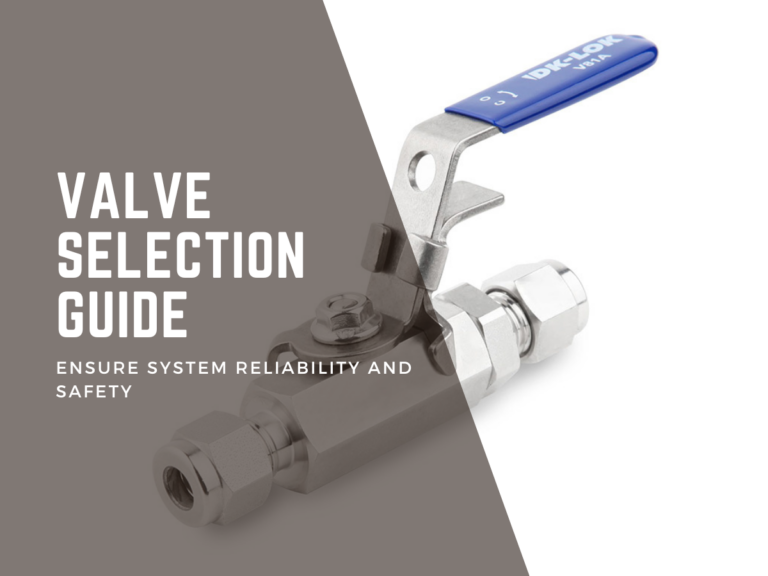Without a proper understanding of tube fittings, there is a high chance of missing a point during the installation. Though taught in only some engineering schools, tube fittings are one area you must get right.
Instead, you want to gain comprehensive information about this premium type of tubing and avoid compromising safety.
If you’re an old-timer in the industry, chances are you made a whole effort to learn about compression fittings and their installation guidelines or probably went down to a science. However, this article goes deep into this topic and everything you’ll need to know about it as a professional. We’ll expedite this course, break down technical information, and give you a few tricks for making a perfect seal and enhancing safety.
What is Tube Fitting?
Tube fittings refer to sturdy connections for different types of tube runs, such as in-line, mounting, offset, and multi-port configurations. They connect such tubes to pipes, hoses, tubing sections, and other components. A configured system is connected by fittings, joints, or connections specially curated to create a perfect seal.
Different types of tubing are used depending on the configuration of the materials to be sealed. Pipes and tubes are rigid and sturdy, allowing a permanent installation where needed. However, a hose employs different layers and types of materials, enhancing portability and flexibility.
To distinguish between a pipe and a tube, look at their specifications and nominal dimensions. While pipes come in unspecified dimensions, a tube’s outer diameter (OD) is always 1.5 inches. So, if you’re handling a structural application where the defining size specification is outside diameter, you’ll use a tube.
The most common pipe application is fluid transportation, where the defining specification is the inside diameter.
Types of Tube Fittings
Tube fitting comes in different versions, depending on their purpose and type of connection.
Purpose
Tubing systems have four major categories:
1. Extending or Terminating Tube Lengths
A fitting in this category can either connect similar and different tubes or use a unique technique to instill pressure variation. It could also cover the end of a tube to terminate flow.
Such tube fittings include:
- Adapter: Connect two tubes with threading, solvent welding, or soldering.
- Coupling: Connects two similar tubes using soldering, threading, and solvent welding techniques.
- Union: Connects two similar tubes, most of which are threaded. As such, these connections are easy to separate without cutting.
- Sleeve: Uses mechanical fasteners to connect two tubes. This type of fitting is generally quicker and faster than soldering or welding a coupling connection.
- Plug: Attach the female end of a tube through welding or threading.
- Cap: Closes a tube end, attaching the male end to it through welding or threading.
2. Adding or Changing Direction
- Tee: This is a T-shaped intersection connecting three tubing pieces. It combines or parts fluid flow.
- Elbow: This changes the tubing direction at an angle. The most common angles are 90, 45, and 22.5 degrees.
- Cross: This is a 4-way connection that can either have one inlet and three outlets or the other way round. Compared to T-shaped connections, this tubing is a little fragile and may experience so much pressure, especially with temperature fluctuations.
- Wye: This is a Y-shaped intersection involving three-piece tubing. Like T-shaped connections, they part or combine fluid flow. However, this shape offers less resistance than its T-shaped counterpart.
3. Connecting Smaller-Sized Tubes
- Olet: A reduction fitting when branched connections lack enough tees or crosses.
- Reducer: Used on intersections that combine tubes of different sizes.
4. Special Connections
- Valves: A connection that adds a valve to control the fluid flow.
The video below shows how to install a compression ball valve.
- Nipple: This connects separate fittings at each end. A typical nipple has a male thread on each end.
- Barb: Uses a barbed tube with ridges to connect a tube and a flexible hose. The barbed tube is inserted into the flexible hose.
Type of Connection
- Compression Fitting: This type of fitting combines two tubes with compression on a ferrule or gasket. To apply compression, a nut on the ferrule is tightened on the tube to seal or secure the tube inside. An industrial compression fitting is easy to install because it does not require assembling tools. It is designed for metallic connections and is made of brass, aluminum, and other sturdy materials.
The video below shows how to install a compression fitting and avoid common mistakes.
- Mechanical Grip Fitting: Involves a two-ferrule assembly with one ferrule at the back and the other at the front. The back ferrule grips the tubing and presses it against the front ferrule. A strong metal spring holds the front ferrule in position to combine and seal the fitting body and the tubing. As such, the assemblies are sturdy and can withstand mechanical vibration. Besides, these parts can easily be assembled and reassembled to avoid damage to the tubing and components.
- Flare Fittings: Has a flare-ended body. It uses special flaring instruments to fit the tubing into the flared end. Flare fittings are better than their compression counterparts regarding pressure endurance and operating parameters.
- Bite-Type Fittings: These are a special type of compression fittings that use a sharpened ferrule to create a seal. When the sharpened ferrule is compressed, it “bites” the tubing to provide a seal. Thus, it leaves a strong pressure connection whose assembly is fast and requires no special tools.
- Threaded Fittings: They come with in-built grooves (threads) on either their inner (female) surfaces, outer (male) surfaces, or both. The tapered surfaces only accept tubings with similar threads. Tubings using tapered threads create a tight seal, adding seal tape to make it safe enough for transporting fuel or gases. On the other hand, straight threads have simple connections without a seal.
Applications of Tube Fittings
The design and construction of tube fittings depend on their application. Hence, you need to work with your fitting supplier during component selection. Most components will either have hydraulic or pneumatic applications.
- Hydraulic applications: Tube fittings that transport liquid, fluids, or solvents have seals and additional sealants to prevent leakage and enhance safety. They are also rigid enough to endure chemical corrosion and rust. For instance, pipes and fittings are made of carbon steel in heating and cooling systems to endure temperature fluctuations.
- Pneumatic applications: Involves pipes transporting gases. As such, they must have tight seals and sealants to avoid leakage. They’re also resistant to wear and tear caused by corrosion.
- Other applications: They present pipes and tube fittings with solid physical integrity to endure high pressure. They also don’t need seals because they transport dry components.
Conclusion
When you get to selecting the hose fittings, butt weld fittings, and connectors, your choice of tube or pipe material will influence the tube fitting type. The pipe material should correspond with the fitting material. Other aspects like wall thickness and tube size will inform how sturdy or flexible your hose or pipe should be.
Steel, brass, aluminum, cast iron, and stainless steel are the most common metal connectors. Polypropylene (PP), polyethylene (PE), PVC, ABS, and nylon are the most common plastic connectors. While the quality of these components varies with different manufacturers, DK-LOK and Simlecco are the most recommended manufacturers.






